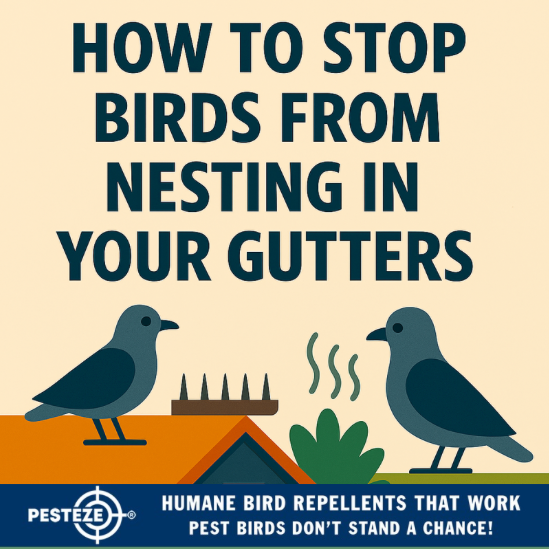HOW TO STOP BIRDS FROM NESTING IN YOUR GUTTERS

HOW TO STOP BIRDS FROM NESTING IN YOUR GUTTERS
SUMMARY
Birds nesting in gutters create serious drainage problems, structural damage, and expensive repairs. This practical guide provides targeted solutions to prevent gutter nesting while maintaining proper water flow and protecting your home's foundation from water damage caused by clogged systems.
FEATURES
- Drainage Protection: Maintains proper water flow while blocking bird access to gutters.
- Structural Preservation: Prevents damage to gutters, downspouts, and roofing systems.
- Easy Installation: DIY-friendly solutions that homeowners can install without professional help.
- Weather Resistance: Durable materials designed to withstand all seasonal conditions.
- Multiple Options: Physical barriers, deterrents, and gutter modifications for every situation.
- Cost Prevention: Avoids expensive gutter cleaning, repairs, and water damage restoration.
GUIDE DESCRIPTION
Gutters provide ideal nesting conditions for birds with their sheltered, elevated position and easy access to building materials, but nesting activity quickly blocks water flow and can cause overflow, foundation damage, and costly structural repairs. Stopping birds from nesting in gutters requires strategic prevention methods that maintain drainage efficiency while eliminating attractive nesting opportunities.
Gutter guards and covers offer the most comprehensive protection against bird nesting. Mesh gutter guards with small openings allow water and small debris through while blocking birds from accessing the interior space. Solid gutter covers with water entry slots provide complete bird exclusion while directing water flow efficiently into the system.
Physical barriers specifically designed for gutters provide targeted deterrence. Gutter spikes and bird combs create uncomfortable landing surfaces along gutter edges without interfering with water collection. Flexible gutter brushes fill the interior space with bristles that allow water flow but prevent nesting material accumulation.
Slope modifications and smooth surfaces eliminate comfortable nesting spots naturally. Gutter slope adjustmentsensure water flows quickly through the system, while smooth gutter liners provide no grip for nesting materials. These modifications work continuously without requiring maintenance or seasonal adjustments.
For existing nests, safe removal is crucial and may be legally restricted during breeding season. Check local wildlife protection laws before removing active nests, and consider waiting until after fledgling season. Professional removal services can ensure compliance with regulations while properly sanitizing affected areas.
Deterrent placement around gutters enhances protection when combined with physical barriers. Reflective tape along rooflines, ultrasonic devices near problem areas, and motion-activated deterrents create multiple layers of discouragement. Position these tools strategically to avoid interference with neighbors while maximizing effectiveness.
Regular maintenance prevents small problems from becoming major issues. Monthly inspections during nesting season allow early detection of nesting attempts, while seasonal cleaning removes debris that might attract birds. Trim nearby branches that provide easy access to gutters, and seal gaps between gutters and fascia boards where birds might enter.
Downspout protection is equally important, as birds often nest in the protected upper portions of downspout systems. Downspout guards and screens prevent access while maintaining drainage capacity, and regular debris removalensures water continues flowing freely through the entire system.
Consider alternative nesting sites positioned away from your home to redirect bird activity. Birdhouses and nesting boxes placed in appropriate locations can satisfy nesting needs while protecting your gutter system from unwanted activity.
- Pukhraj Sharma


Comments 0